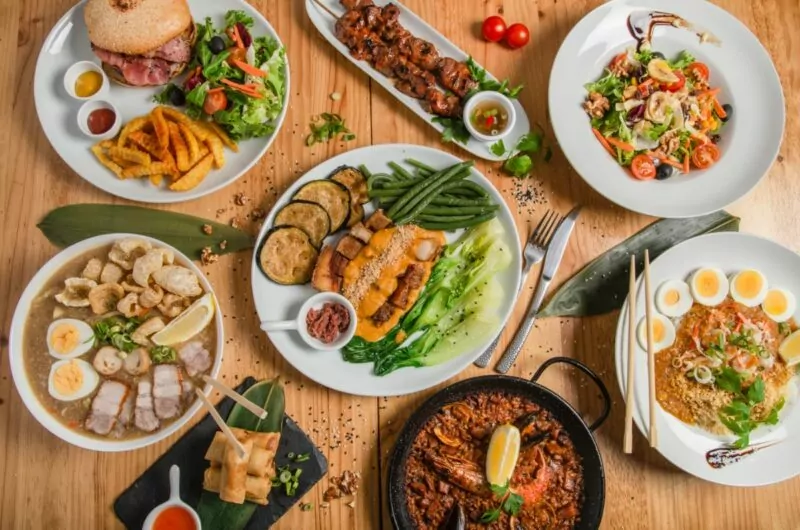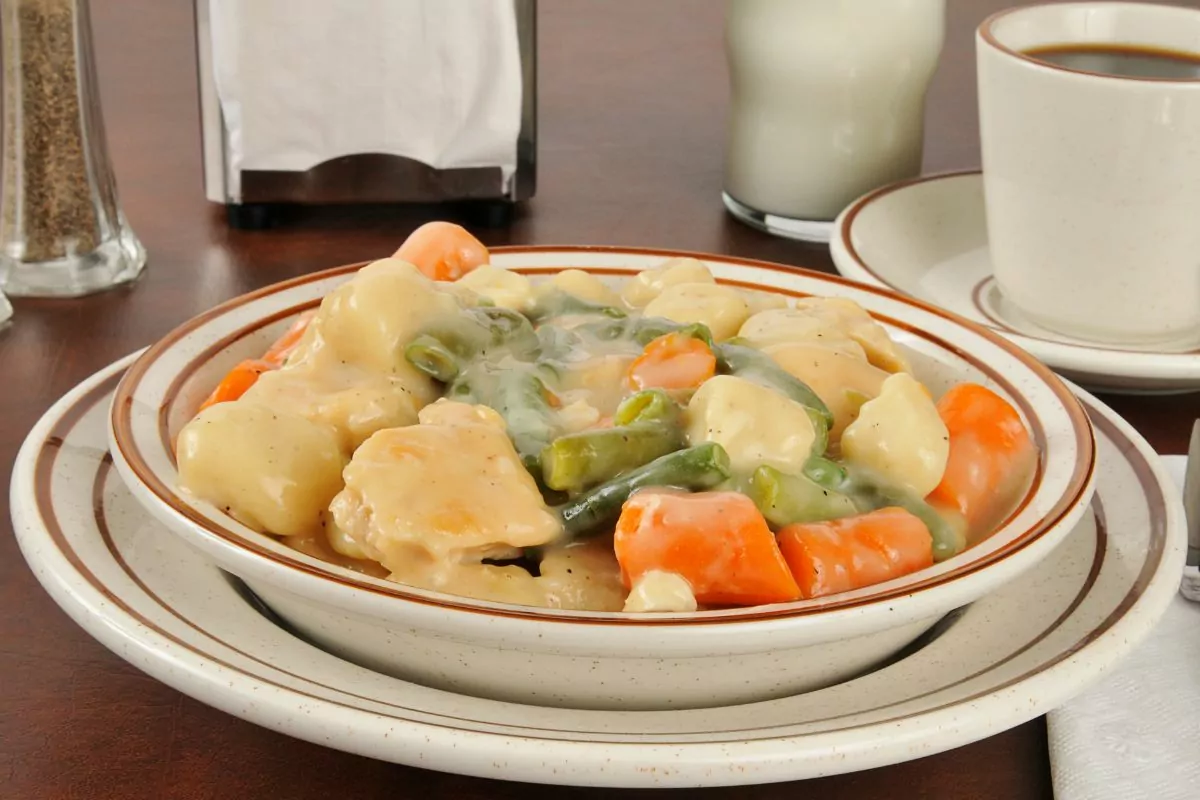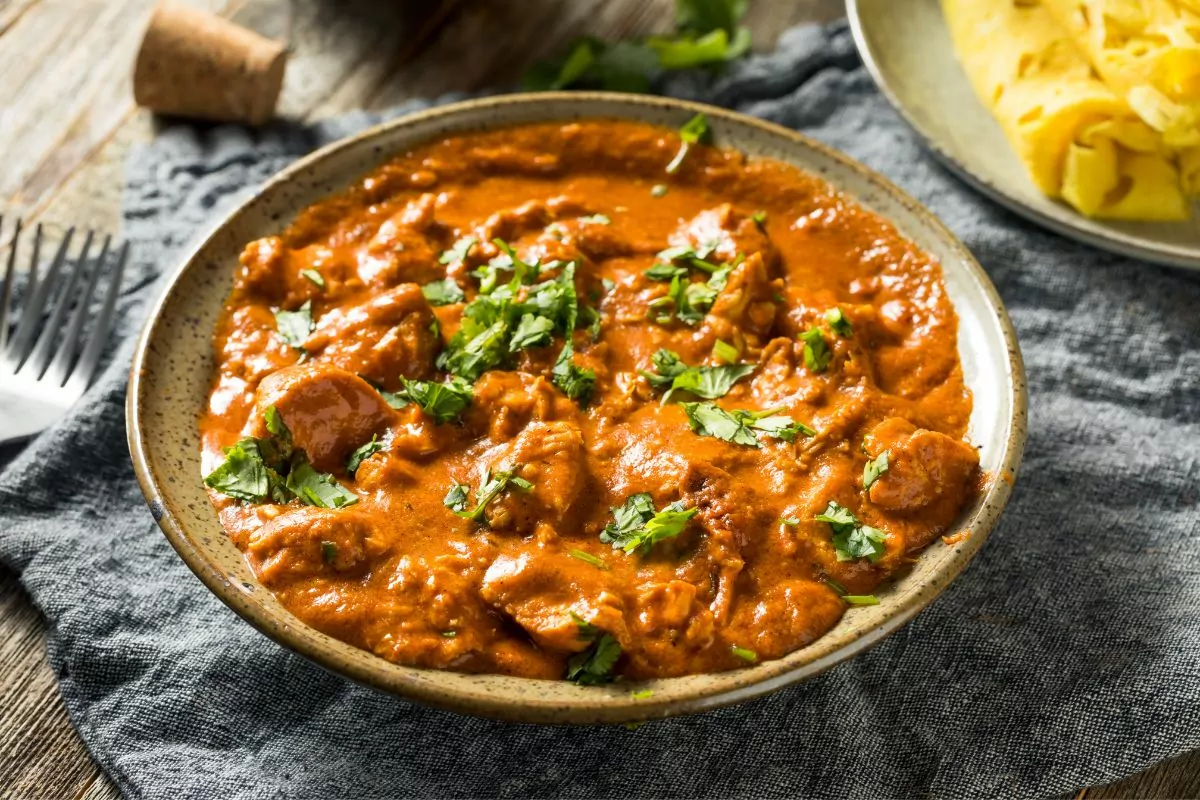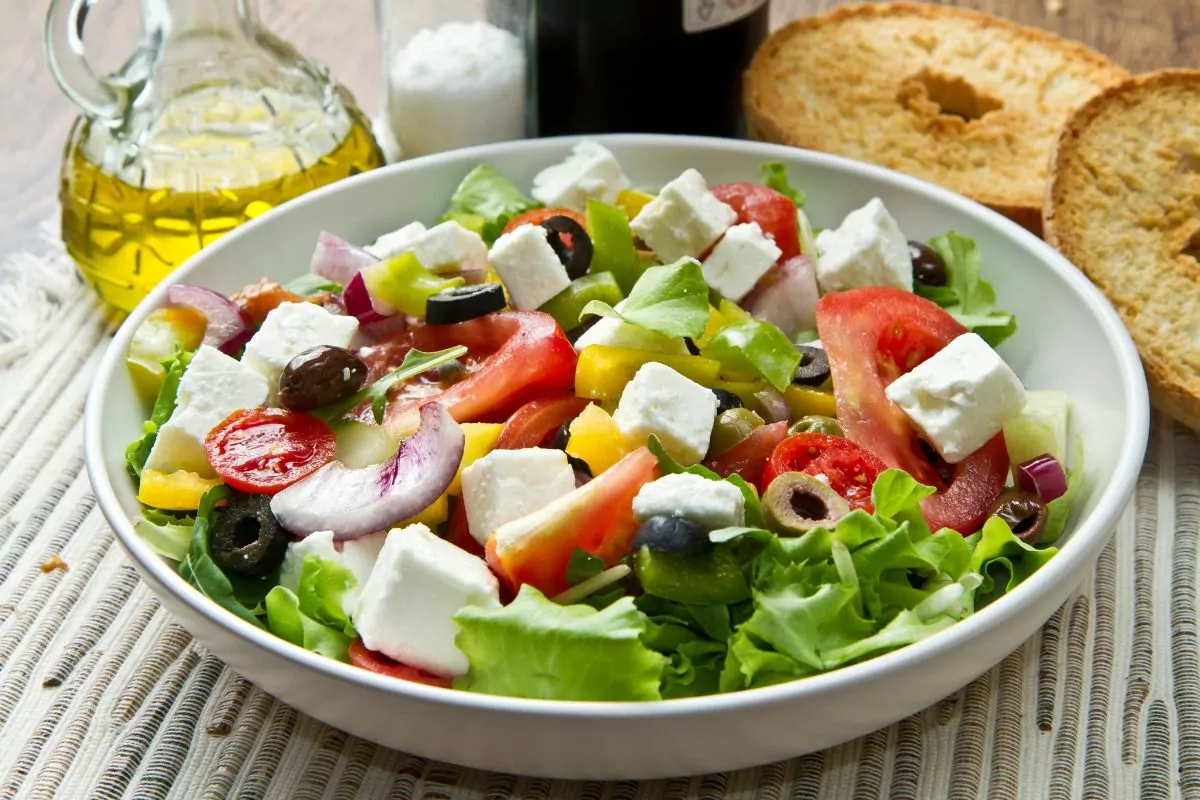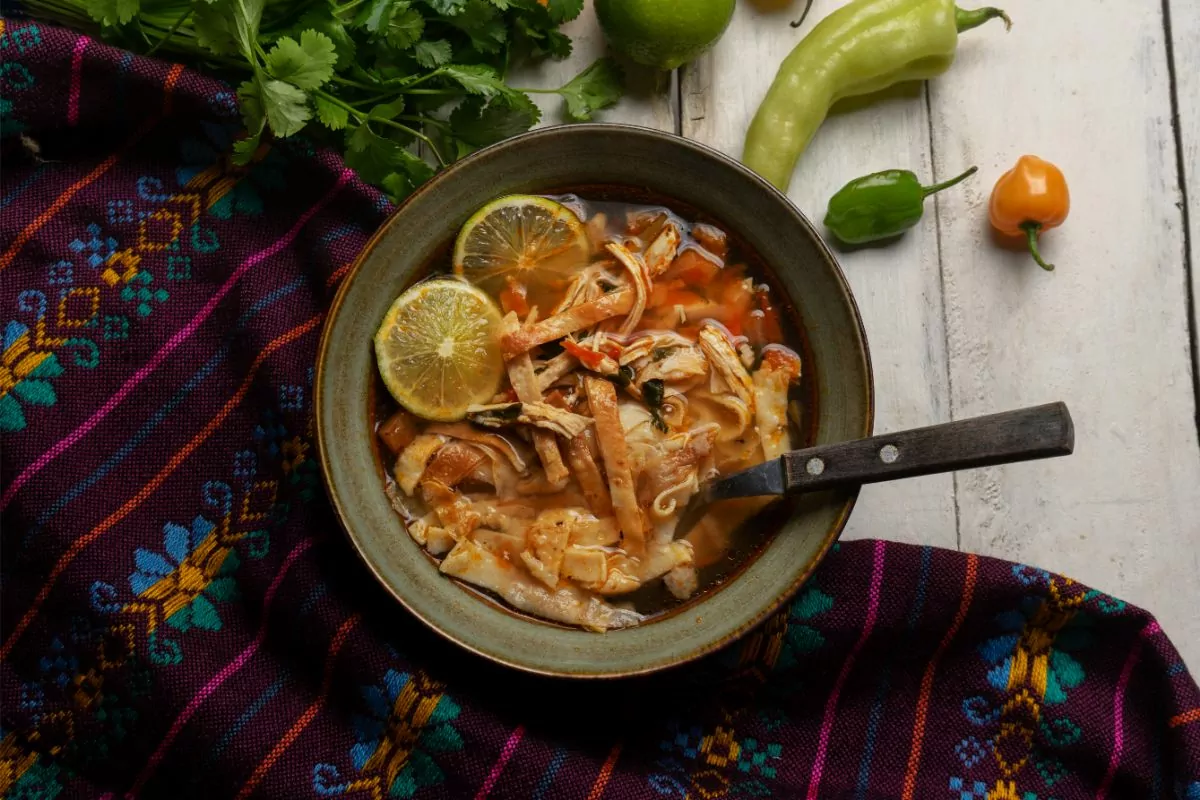Filipino cuisine is a vibrant and diverse amalgamation of flavors deeply rooted in the country’s rich cultural history.
It reflects the influences of its indigenous heritage, as well as Spanish, Chinese, and American culinary traditions.
In this article, we will dig into some of our favorite Filipino recipes, each offering a unique taste and story, showcasing the Philippines’ multifaceted culinary landscape.
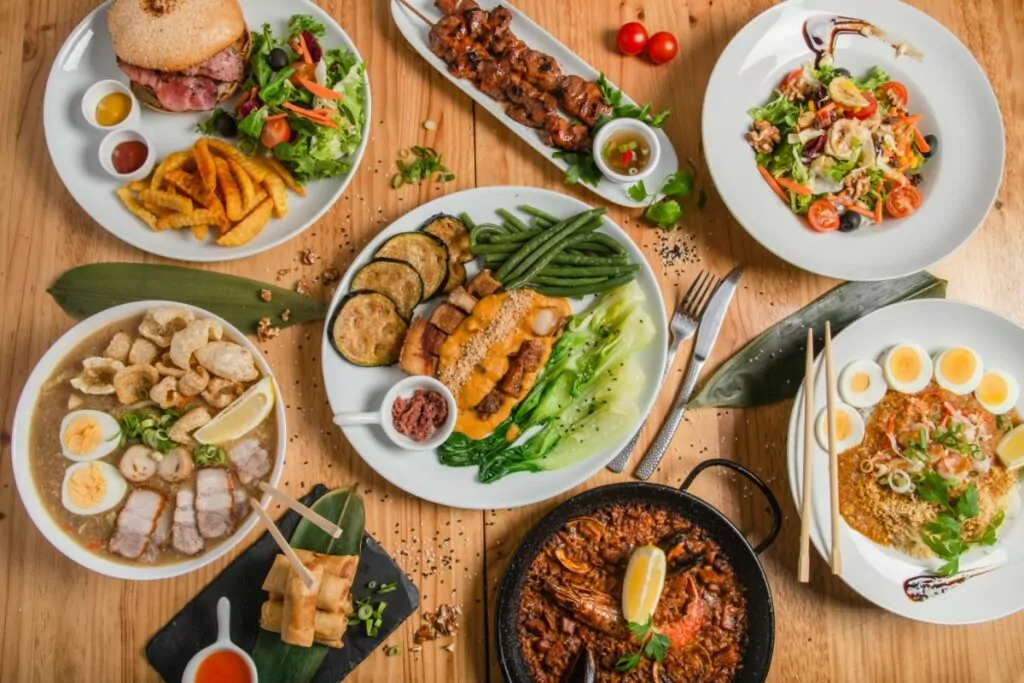
Let’s get cooking!
Hearty Stews And Soups
Filipino stews and soups are a comforting embrace, warming the soul with every spoonful.
Below are some incredible Filipino recipes for soups and stews that you have to try.
1. Adobo
Adobo’s history is as rich as its taste.
This dish dates back to the pre-colonial Philippines, where cooking in vinegar was a common preservation method.
Today, Adobo is a beloved national dish, with each region having its own twist.
The basic components remain consistent: a protein (chicken, in this instance) or vegetable marinated in soy sauce, vinegar, and garlic and then slowly cooked.
This process tenderizes the meat and infuses it with a complex blend of flavors.
The dish is often served with rice, which perfectly complements the salty, tangy, and slightly sweet sauce.
2. Sinigang
Sinigang’s charm lies in its simplicity and the heartfelt warmth it brings.
This soup is a staple in Filipino households, especially during rainy days or when seeking comfort food.
The sourness of tamarind, the soup’s base, is a distinct characteristic that sets it apart.
The choice of protein varies, but this particular recipe uses pork belly.
You can choose a different meat if you prefer – the process remains the same: simmer the meat or seafood to perfection and add an assortment of vegetables for a wholesome meal.
Sinigang is a dish that brings families together, symbolizing Filipino hospitality and the love of sharing a hearty meal.
3. Kare-Kare
This is a traditional Filipino stew known for its rich, peanut-based sauce.
Kare-Kare typically includes oxtail, pork hocks, and sometimes tripe, cooked until tender.
A variety of vegetables like eggplant, Chinese cabbage, and string beans are added.
The stew is thickened with ground-roasted peanuts and peanut butter, giving it a distinctive flavor and creamy texture.
It’s traditionally served with shrimp paste (bagoong) on the side to enhance its taste.
Kare-Kare celebrates Filipino flavors, embodying the cuisine’s love for combining sweet, savory, and umami elements.
4. Pinakbet
Pinakbet, also known as Pakbet, is a traditional Filipino vegetable stew.
Originating from the Ilocos region, this dish features a variety of vegetables like okra, squash, eggplants, bitter melon, and string beans.
The vegetables are sautéed and then simmered with shrimp paste (bagoong) for a unique, savory flavor.
Often, pork is added for extra richness, but the focus remains on the vibrant mix of vegetables.
Nourishing Noodles And Rice Dishes
Filipino noodle and rice dishes are as diverse as the archipelago itself, each offering a distinct taste and texture.
5. Pancit
The origins of Pancit can be traced back to Chinese traders who introduced noodles to the Philippines.
Since then, it has become an integral part of Filipino cuisine.
This dish is not only a culinary delight but also a cultural symbol, often served at birthdays and special occasions as a sign of long life and prosperity.
The preparation involves stir-frying rice noodles with various vegetables and proteins, seasoned with soy sauce and sometimes oyster sauce for an umami flavor.
The key to an authentic Pancit is in its balance of flavors and the texture of the noodles, which should be neither too soft nor too hard.
Garnishing with a squeeze of lemon or calamansi adds a fresh, zesty note to this beloved dish.
6. Arroz Caldo
A comforting rice porridge, Arroz Caldo is a testament to the fusion of Spanish and Chinese influences in Filipino cuisine.
This dish, often associated with warmth and comfort, is prepared by simmering rice in a rich chicken broth flavored with ginger and garlic.
It’s typically garnished with hard-boiled eggs, green onions, and a splash of calamansi for a tangy kick.
The creamy texture of the porridge, combined with the savory flavors of chicken and the aromatic ginger, makes Arroz Caldo a favorite, especially during the cooler months or as a soothing meal for the unwell.
Pork Delicacies
Pork is a central ingredient in many Filipino dishes, celebrated for its versatility and rich flavors – we’ve included some mouth-watering recipes below.
7. Lechon
Known as the centerpiece of Filipino festivities, Lechon is a whole pig roasted over charcoal.
The process involves slow-roasting the pig until the skin turns crispy and golden while the inside remains tender and juicy.
The meat is often seasoned with a blend of spices like salt, pepper, and garlic and sometimes stuffed with lemongrass, onions, and bay leaves for added flavor.
Lechon is a culinary spectacle, symbolizing celebration and feasting in Filipino culture.
8. Sisig
Originating from Pampanga, Sisig is a popular Filipino dish made from chopped pig’s head and liver – although this recipe includes pork belly and ears instead.
It’s usually seasoned with calamansi and chili peppers.
Traditionally served on a sizzling plate, Sisig is known for its crispy texture and spicy, tangy flavor.
Hungry for more? Try these Filipino pork chop recipes or these pork hock recipes next.
Chicken Classics
Chicken is a versatile ingredient in Filipino cooking, featured in many beloved recipes.
9. Tinola
Tinola is a soothing chicken soup that is both hearty and healthy.
It’s made with chicken pieces simmered in a ginger-flavored broth and typically includes green papaya and chili leaves.
Tinola is known for its subtle yet comforting flavors, with the ginger providing a warm, spicy undertone.
10. Chicken Inasal
This is a Visayan barbecue dish where chicken pieces are marinated in a mixture of calamansi, pepper, coconut vinegar, and annatto, then grilled over hot coals.
The annatto gives the chicken a distinct yellow-orange hue and a slightly nutty flavor.
Chicken Inasal is known for its tangy and smoky taste and is usually served with rice, soy sauce, and vinegar on the side.
This dish is a popular street food in the Philippines, embodying the Filipino lovae for grilled flavors.
We have more delicious Filipino chicken recipes here.
Popular Appetizers And Finger Foods
Filipino cuisine offers a variety of appetizers and finger foods, perfect for gatherings and everyday snacks.
11. Lumpiang Shanghai
Lumpiang Shanghai is a type of Filipino spring roll, a staple at gatherings, and a favorite snack.
These thin, crispy rolls are filled with a mixture of ground pork, onions, carrots, and seasonings.
Once rolled, they are deep-fried to golden perfection. Lumpiang Shanghai is typically served with a sweet and sour sauce or a vinegar-based dipping sauce, adding a tangy complement to the savory filling.
12. Turon
Turon, also known as Banana Lumpia, is a beloved Filipino snack.
It consists of ripe bananas (often Saba bananas) and sometimes a slice of jackfruit, wrapped in a spring roll wrapper and then fried to a crispy golden brown.
The sugar coating caramelizes during frying, creating a sweet, crunchy exterior that complements the soft, warm banana inside.
Turon is commonly enjoyed as a snack or dessert and is a staple in street food settings.
Sweet And Savory Snacks
Finally, Filipino snacks, known as merienda, are an essential part of daily life, offering a diverse array of flavors. Let’s try some of these out:
13. Halo-Halo
Halo-Halo is a celebration of flavors and textures.
The name, which translates to “mix-mix,” perfectly describes this colorful and eclectic dessert.
It’s a delightful concoction of crushed ice and evaporated milk mixed with various ingredients like sweetened beans, coconut strips, sago, and gulaman (agar jelly).
Topped with ube ice cream and leche flan, Halo-Halo is a visually appealing and delicious treat.
Each spoonful offers a different taste and texture, making it a fun and interactive eating experience.
14. Empanada
Filipino Empanadas are a testament to Spanish influence.
These pastry turnovers are filled with a savory mixture of meat (usually chicken or pork), potatoes, carrots, and peas, seasoned with onions and garlic.
The dough is crisp and golden when fried, encasing the moist and flavorful filling.
Empanadas are a popular merienda item, perfect for a quick snack or a light meal.
Final Thoughts
Exploring these Filipino recipes offers a glimpse into the rich tapestry of flavors and traditions that define Filipino cuisine.
Each dish, from the comforting stews to the vibrant desserts, tells a story of the Philippines’ diverse cultural heritage.
Filipino food is not just about sustenance; it’s about community, celebration, and the enduring spirit of the Filipino people.
Frequently Asked Questions
The national dish of the Philippines is adobo, a popular dish made with meat (typically chicken or pork) marinated in vinegar, soy sauce, garlic, and spices.
Determining the best food in the Philippines is subjective and is based on personal taste.
However, dishes like lechon (roasted pig), sinigang (a sour soup), and halo-halo (a mixed dessert) are widely celebrated for their unique flavors and cultural significance.
14 Of Our Favorite Filipino Recipes
4
servings30
minutes40
minutes300
kcalIngredients
Directions
- Choose a recipe from above
- Gather your ingredients
- Prepare your dish
- Enjoy.
Recipe Video
https://www.youtube.com/watch?v=7SZlULk20s4Video can’t be loaded because JavaScript is disabled: My FAVE Filipino dishes #AtHome #WithMe | Marion's Kitchen (https://www.youtube.com/watch?v=7SZlULk20s4)- 16 Martha Stewart Baking Recipes You Have To Try - May 29, 2024
- 19 Of The Best Martha Stewart Cake Recipes Ever - May 28, 2024
- How To Make A Tasty Ina Garten Red Velvet Cake At Home - May 24, 2024

